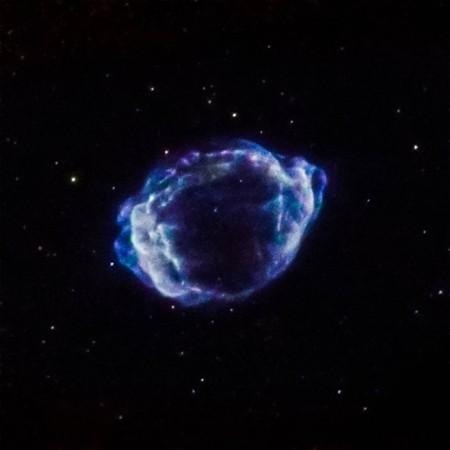
Explosions from a supernova are among the most powerful displays of power in the universe and one such incident has extinguished a star in just a few days.
When a star has reached its end days, it finally explodes into a supernova, expelling matter outward at extreme speeds. Astronomers have recorded crumbled particles traveling at 10 percent the speed of light, away from stars as a result, but even then, it normally takes a few months, or at least a few weeks for a star to completely fizzle out.
A recent supernova, called a Fast-Evolving Luminous Transients (FELT) was found by astronomer Brad Tucker from the Australian National University using NASA's Kepler data, reports Gizmodo. Among the different types of supernovas, Felts are known to be unconventional and even exotic as only a few of them have been ever documented. Normal supernovas are often measured in months while Felts appear, get really bright and disappear really quickly.
It is their brightness that really sets them apart from normal supernova explosions, notes the report. So far, three theories have been put out by astronomers to try and explain what really is happening; they are either the glowing remains of a gamma-ray burst, it is fueled by a magnetar, or a failed supernova as a result of a white dwarf swallowing up a nearby star causing it to explode. However, new research seems to suggest that none of those theories really explain it accurately enough.
The star that collapsed was 1.3 billion light years away. Called the KSN 2015K and the Felt event lasted just 2.2 days, 10 times faster than a standard supernova. After about 6.8 days, it dimmed down to about half its brightest point, and it was completely gone in 25 days.
As to how this Felt happened, the report explains that the star might have had a smaller explosion event that ejected a good amount of mass and material into space, this formed a large cloud of dust moving away from the star. After a year or so of this happening, the second explosion, this time an actual supernova ejected energy and more dust at extremely high velocities, which caught up with the dust cloud from the first explosion.
This collision caused an extremely bright show of light in the sky, but a major part of the supernova's energy had already been spent by this time, fizzling it out almost immediately, explains the report.
"We've discovered yet another way that stars die and distribute material back into space," said Tucker in a statement.

















